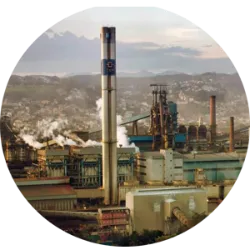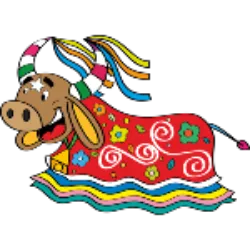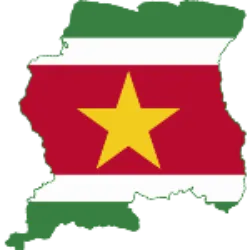Known nationally as the City of Steel
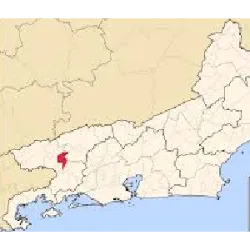
Known nationally as the City of Steel, Volta Redonda holds this title because it is home to the Companhia Siderúrgica Nacional (CSN), the first large steel mill in Brazil. Opened in 1946, CSN was a key player in the country's industrialization process, marking a new cycle in the Brazilian economy. Located on the banks of the Paraíba do Sul River, the city transformed from a small rural village into an important industrial hub in the Southeast.
The plant project was conceived during the Second World War, with support from the United States, and aimed to reduce external dependence on steel production. The installation of CSN attracted thousands of workers from various parts of Brazil, promoting rapid population growth and shaping the urban, economic and cultural profile of the city.
To this day, the company's presence directly influences daily life in Volta Redonda. Although the service and trade sector has gained strength in recent decades, the city's history remains linked to steel, heavy industry and workers' struggle, which have marked generations and shaped the local identity.
Origin of the name Volta Redonda

The name Volta Redonda has a geographical origin and is directly linked to the Paraíba do Sul River, which runs through the municipality of Rio de Janeiro. The name arose due to a sharp bend in the river's course, which forms an almost circular loop — a striking feature that impressed the first explorers of the region in the 18th century.
This natural peculiarity was identified by prospectors and colonizers who explored the area in search of gold and precious stones. The round bend in the river became a reference for location and, over time, began to name the village that grew there. The term remained and was eventually made official with the creation of the municipality in 1954.
Long before that, the area was inhabited by indigenous peoples such as the Puris and Acaris. With the arrival of the Jesuits in 1727 and the subsequent founding of the Santa Cruz Farm, the region began to be occupied by large rural properties. The origin of the name, however, kept alive the memory of the geography that shaped the birth of the city.
Today, Volta Redonda is known as the “Steel City”, but its name continues to pay homage to the natural landscape that gave it its identity.
Test yourself with one of these challenges 👇
Discover some interesting facts about VOLTA REDONDA
planned urbanism
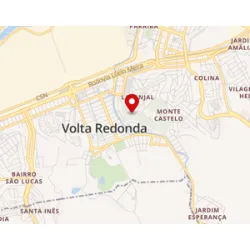
Created with the purpose of housing the Companhia Siderúrgica Nacional (CSN), Volta Redonda was planned to be a model working-class city. Its urban growth followed an organized project, with neighborhoods structured to accommodate workers from the plant. Towns such as Santa Cecília, Conforto and Aterrado were designed with wide streets, basic services and public spaces. Some areas even have names based on letters and numbers, reflecting the industrial logic applied to urban planning.
More than steel and concrete, the city also became a symbol of resistance. In the 1970s and 1980s, Volta Redonda was the scene of workers' movements that marked the history of Brazil. The strikes led by CSN workers, especially in 1988, gained national prominence by demanding better working conditions and more democracy in the factory environment, still under the echoes of the military dictatorship. The confrontation with the Army, which resulted in the death of three workers, mobilized the country and made the city a reference in the union struggle.
Today, Volta Redonda preserves in its planned streets and in its collective memory the legacy of a city that grew with steel and strengthened itself in the fight for rights.
nature, leisure and passion for football
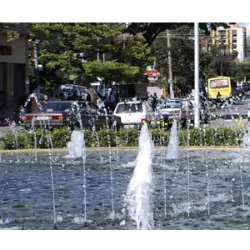
Known for its industrial profile, Volta Redonda also stands out for its leisure and contact with nature. The city is home to the Açude de Santo Antônio Municipal Natural Park, a green haven ideal for walks, picnics and observation of native fauna and flora. Another highlight is the Municipal Zoo, one of the largest in the state of Rio de Janeiro, which attracts visitors from all over the region with its variety of animals and structure focused on environmental education.
In the sports field, the city pulsates with the energy of Volta Redonda Futebol Clube, Voltaço. Founded in 1976, the team represents the city with a tradition in Rio de Janeiro football and has already competed in important national tournaments, including editions of the Brazilian Championship. Its stadium, Raulino de Oliveira, is one of the most modern in the interior of Rio de Janeiro and frequently hosts games of major clubs from Rio de Janeiro, in addition to hosting decisive matches of the Voltaço, strengthening the city's sporting identity.
Combining preserved nature, accessible leisure and a passion for sport, Volta Redonda offers quality of life despite being an industrial hub.
Regional flavors with influence
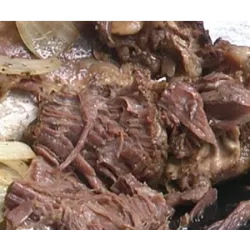
Although Volta Redonda is known as the Steel City due to its industrial vocation, its cuisine has strong traces of Minas Gerais and Rio de Janeiro cuisine, reflecting the cultural mix of the southern region of Rio de Janeiro. Typical dishes such as feijão tropeiro, tutu de feijão, frango com carvalho and torresmo are quite popular in local restaurants, many of which are family-run and traditional.
Another highly appreciated delicacy is the ribs in the steam, usually served in generous portions and accompanied by rice, farofa and vinaigrette. Angu à baiana, with meat or offal sauce, is also part of the locals' favorite menu. For lovers of bar food, snacks such as artisanal sausage, cornmeal pastries and cracklings are essential for conversation in the city's bars.
In the beverage sector, the highlight is the artisanal cachaças produced in the Paraíba Valley region, served straight or in caipirinhas, as well as natural juices made from tropical fruits and sugarcane juice. Sweets such as guava paste, dulce de leche and jams are also very popular at local fairs and markets.
Volta Redonda proves that, despite its industrial roots, its palate preserves traditions and authentic flavors.
Municipal Natural Park
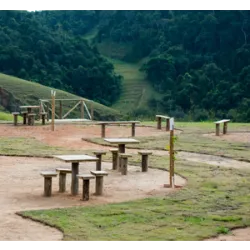
The Santo Antônio Dam Municipal Natural Park, in Volta Redonda, is one of the city's main green areas, offering a leisure and tranquility option for residents and tourists. With a rich biodiversity, the park is a true refuge for local fauna and flora, and is ideal for walks, picnics and outdoor activities.
Located in a privileged region, the park has several trails that allow visitors to explore the city's preserved nature. In addition to being an excellent option for those looking to relax amidst lush landscapes, the place also promotes environmental education, with activities that raise awareness about environmental preservation.
With its 16 hectares of area, the park is one of the largest urban green spaces in Volta Redonda and has become an important meeting point for those who want to escape the hustle and bustle of the city and enjoy moments of leisure and contemplation of nature. The presence of birds, small mammals and vegetation typical of the Atlantic Forest complements the natural immersion experience.
The Santo Antônio Reservoir Park stands out as an accessible and charming option for those who want to enjoy the best of ecotourism, without leaving the municipality.
The Church of Saint Anthony
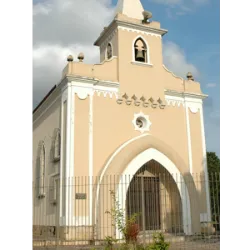
The Church of Santo Antônio is one of the greatest historical and religious symbols of Volta Redonda. Built in the early 19th century in a colonial architectural style, the church reflects the origins of the city and its connection with the community that formed around the chapel, and is one of the most important landmarks in local history.
The church was inaugurated in 1835, when 10 families decided to settle in the region and build the chapel dedicated to Santo Antônio, the city's patron saint. Over the years, the church became the religious center of the community, attracting worshippers and tourists for its charming architecture and the religious tradition it carries. Its simple but imposing façade is a classic example of the influence of the colonial period on the city.
Today, the Church of Santo Antônio continues to be a place for religious celebrations, including masses, weddings and religious festivals, especially the feast of Santo Antônio, which is one of the most anticipated in the city. In addition, the church also hosts cultural events, such as concerts and musical performances, making it an important meeting point for the community.
Visiting the Church of Santo Antônio is like traveling back in time, allowing tourists to see one of the oldest and most significant landmarks in Volta Redonda and understand the history that shaped the city.
Test yourself with one of these challenges 👇
HOME
